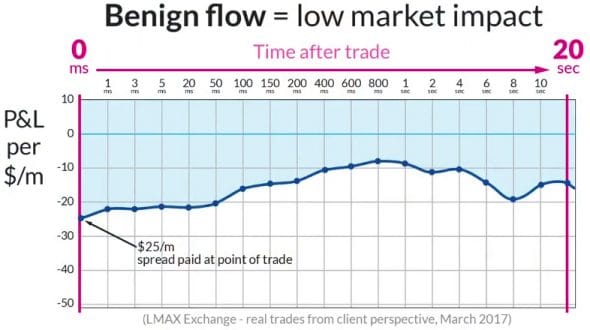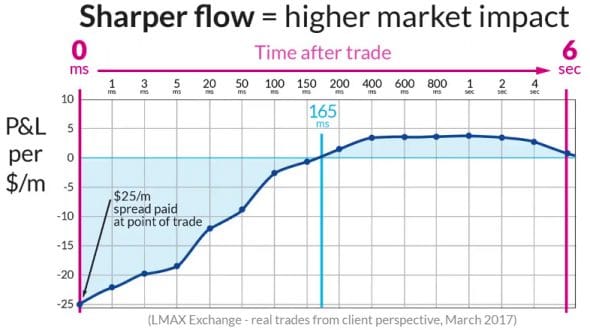Executive Interview with Sonia Barlow | LMF Network | FMLS:24
Executive Interview with Sonia Barlow | LMF Network | FMLS:24
Executive Interview with Sonia Barlow | LMF Network | FMLS:24
Executive Interview with Sonia Barlow | LMF Network | FMLS:24
Executive Interview with Sonia Barlow | LMF Network | FMLS:24
Executive Interview with Sonia Barlow | LMF Network | FMLS:24
Diversity, Inclusion, and Entrepreneurship in Fintech: Insights from Sonia, Founder of LMF Network
How can #fintech leaders build inclusive workplaces, retain top talent, and drive meaningful change in 2025? In this engaging interview, Sonia, Founder of the LMF #Network, discusses the importance of #diversity, equity, and upskilling in modern workplaces. From practical tips for scaling businesses to addressing misconceptions about inclusion, Sonia shares actionable insights for leaders, entrepreneurs, and fintech professionals.
#fmls #fmls24 #fmevents
📣 Stay updated with the latest in finance and trading!
Follow FMevents across our social media platforms for news, insights, and event updates.
Connect with us today:
🔗 LinkedIn: https://www.linkedin.com/showcase/financemagnates-events/
👍 Facebook: https://www.facebook.com/FinanceMagnatesEvents
📸 Instagram: https://www.instagram.com/fmevents_official
🐦 Twitter: https://twitter.com/F_M_events
🎥 TikTok: https://www.tiktok.com/@fmevents_official
▶️ YouTube: https://www.youtube.com/@FinanceMagnates_official
Don't miss out on our latest videos, interviews, and event coverage.
Subscribe to our YouTube channel for more!
Diversity, Inclusion, and Entrepreneurship in Fintech: Insights from Sonia, Founder of LMF Network
How can #fintech leaders build inclusive workplaces, retain top talent, and drive meaningful change in 2025? In this engaging interview, Sonia, Founder of the LMF #Network, discusses the importance of #diversity, equity, and upskilling in modern workplaces. From practical tips for scaling businesses to addressing misconceptions about inclusion, Sonia shares actionable insights for leaders, entrepreneurs, and fintech professionals.
#fmls #fmls24 #fmevents
📣 Stay updated with the latest in finance and trading!
Follow FMevents across our social media platforms for news, insights, and event updates.
Connect with us today:
🔗 LinkedIn: https://www.linkedin.com/showcase/financemagnates-events/
👍 Facebook: https://www.facebook.com/FinanceMagnatesEvents
📸 Instagram: https://www.instagram.com/fmevents_official
🐦 Twitter: https://twitter.com/F_M_events
🎥 TikTok: https://www.tiktok.com/@fmevents_official
▶️ YouTube: https://www.youtube.com/@FinanceMagnates_official
Don't miss out on our latest videos, interviews, and event coverage.
Subscribe to our YouTube channel for more!
Diversity, Inclusion, and Entrepreneurship in Fintech: Insights from Sonia, Founder of LMF Network
How can #fintech leaders build inclusive workplaces, retain top talent, and drive meaningful change in 2025? In this engaging interview, Sonia, Founder of the LMF #Network, discusses the importance of #diversity, equity, and upskilling in modern workplaces. From practical tips for scaling businesses to addressing misconceptions about inclusion, Sonia shares actionable insights for leaders, entrepreneurs, and fintech professionals.
#fmls #fmls24 #fmevents
📣 Stay updated with the latest in finance and trading!
Follow FMevents across our social media platforms for news, insights, and event updates.
Connect with us today:
🔗 LinkedIn: https://www.linkedin.com/showcase/financemagnates-events/
👍 Facebook: https://www.facebook.com/FinanceMagnatesEvents
📸 Instagram: https://www.instagram.com/fmevents_official
🐦 Twitter: https://twitter.com/F_M_events
🎥 TikTok: https://www.tiktok.com/@fmevents_official
▶️ YouTube: https://www.youtube.com/@FinanceMagnates_official
Don't miss out on our latest videos, interviews, and event coverage.
Subscribe to our YouTube channel for more!
Diversity, Inclusion, and Entrepreneurship in Fintech: Insights from Sonia, Founder of LMF Network
How can #fintech leaders build inclusive workplaces, retain top talent, and drive meaningful change in 2025? In this engaging interview, Sonia, Founder of the LMF #Network, discusses the importance of #diversity, equity, and upskilling in modern workplaces. From practical tips for scaling businesses to addressing misconceptions about inclusion, Sonia shares actionable insights for leaders, entrepreneurs, and fintech professionals.
#fmls #fmls24 #fmevents
📣 Stay updated with the latest in finance and trading!
Follow FMevents across our social media platforms for news, insights, and event updates.
Connect with us today:
🔗 LinkedIn: https://www.linkedin.com/showcase/financemagnates-events/
👍 Facebook: https://www.facebook.com/FinanceMagnatesEvents
📸 Instagram: https://www.instagram.com/fmevents_official
🐦 Twitter: https://twitter.com/F_M_events
🎥 TikTok: https://www.tiktok.com/@fmevents_official
▶️ YouTube: https://www.youtube.com/@FinanceMagnates_official
Don't miss out on our latest videos, interviews, and event coverage.
Subscribe to our YouTube channel for more!
Diversity, Inclusion, and Entrepreneurship in Fintech: Insights from Sonia, Founder of LMF Network
How can #fintech leaders build inclusive workplaces, retain top talent, and drive meaningful change in 2025? In this engaging interview, Sonia, Founder of the LMF #Network, discusses the importance of #diversity, equity, and upskilling in modern workplaces. From practical tips for scaling businesses to addressing misconceptions about inclusion, Sonia shares actionable insights for leaders, entrepreneurs, and fintech professionals.
#fmls #fmls24 #fmevents
📣 Stay updated with the latest in finance and trading!
Follow FMevents across our social media platforms for news, insights, and event updates.
Connect with us today:
🔗 LinkedIn: https://www.linkedin.com/showcase/financemagnates-events/
👍 Facebook: https://www.facebook.com/FinanceMagnatesEvents
📸 Instagram: https://www.instagram.com/fmevents_official
🐦 Twitter: https://twitter.com/F_M_events
🎥 TikTok: https://www.tiktok.com/@fmevents_official
▶️ YouTube: https://www.youtube.com/@FinanceMagnates_official
Don't miss out on our latest videos, interviews, and event coverage.
Subscribe to our YouTube channel for more!
Diversity, Inclusion, and Entrepreneurship in Fintech: Insights from Sonia, Founder of LMF Network
How can #fintech leaders build inclusive workplaces, retain top talent, and drive meaningful change in 2025? In this engaging interview, Sonia, Founder of the LMF #Network, discusses the importance of #diversity, equity, and upskilling in modern workplaces. From practical tips for scaling businesses to addressing misconceptions about inclusion, Sonia shares actionable insights for leaders, entrepreneurs, and fintech professionals.
#fmls #fmls24 #fmevents
📣 Stay updated with the latest in finance and trading!
Follow FMevents across our social media platforms for news, insights, and event updates.
Connect with us today:
🔗 LinkedIn: https://www.linkedin.com/showcase/financemagnates-events/
👍 Facebook: https://www.facebook.com/FinanceMagnatesEvents
📸 Instagram: https://www.instagram.com/fmevents_official
🐦 Twitter: https://twitter.com/F_M_events
🎥 TikTok: https://www.tiktok.com/@fmevents_official
▶️ YouTube: https://www.youtube.com/@FinanceMagnates_official
Don't miss out on our latest videos, interviews, and event coverage.
Subscribe to our YouTube channel for more!























